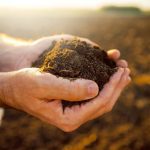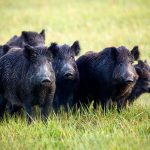
Tag Archives Invasive species
Opinion: Good or bad?

App to help Squeal on Pigs
Manitoba Pork hopes Farm Health Guardian will help streamline the reporting process for wild pigs

Timing is critical to scout for waterhemp
This tier one noxious weed must not be allowed to set seed, and once it’s established it’s tough to root out

Squeal on Pigs gets loud on wild swine
Education and reporting hub the latest effort to bring Manitoba’s wild pig issue to heel

Comment: Unintended consequences of bioproducts
Adding fungi to soil may introduce invasive species, threatening ecosystems

Saskatchewan to license, limit wild boar farming
Moratorium placed on any new farms

Ontario moves to phase out wild boar farming
Province, feds fund swine fever defense plans

Palmer amaranth found in Manitoba
Experts have been watching as the infamous yield eater has been creeping through fields in Manitoba’s neighbour to the south

Comment: Management key to zebra mussel challenge
This invasive species is here to stay so we need to limit the damage

Waterhemp found in Stuartburn, La Broquerie
The invasive species can cause tremendous yield losses, particularly among row crops


